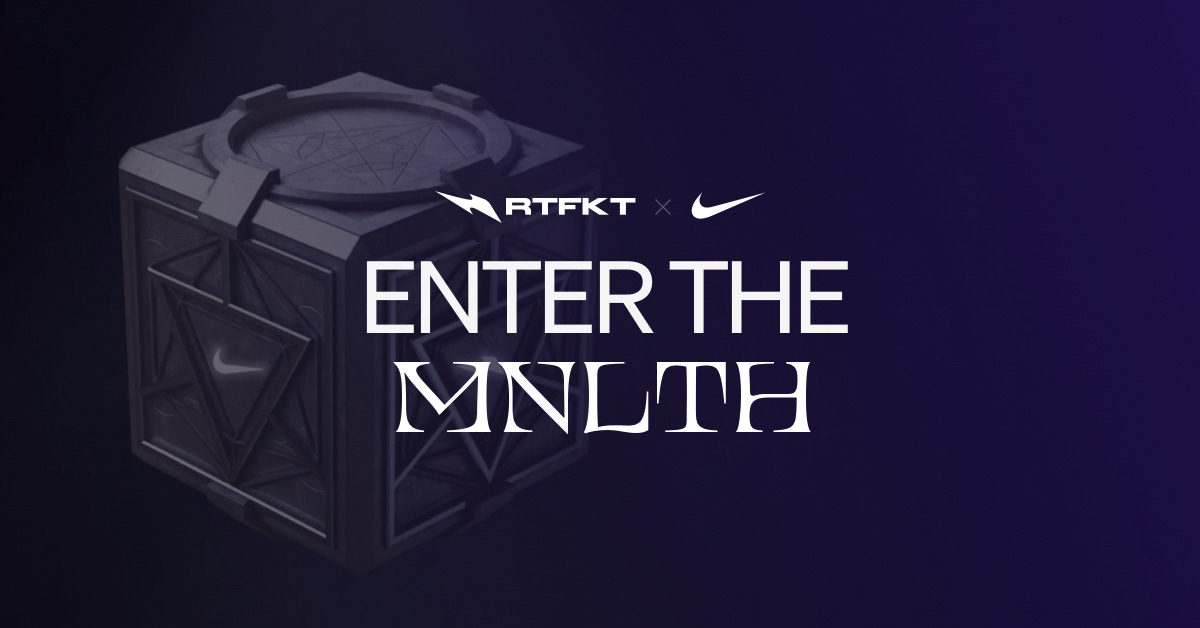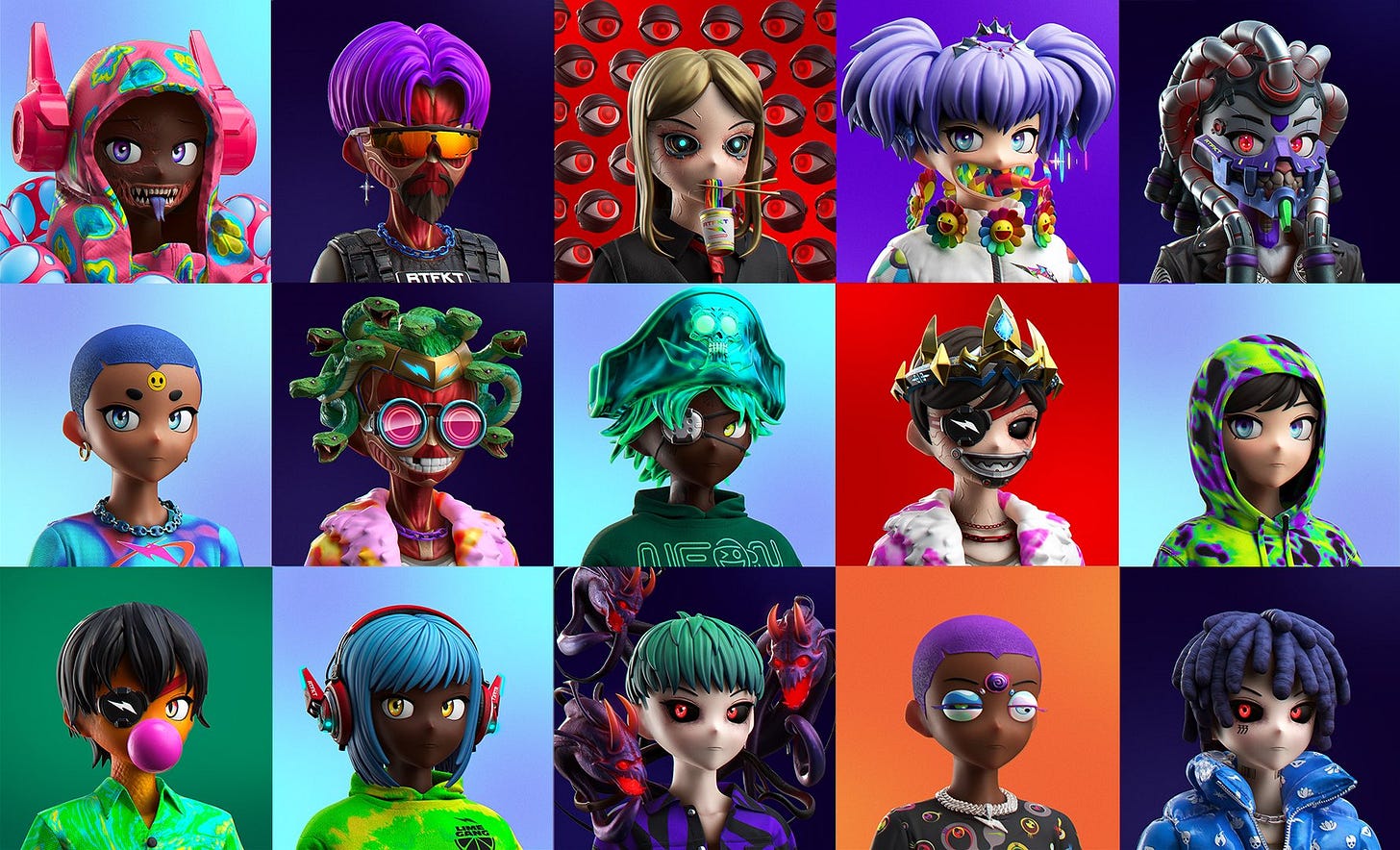NFT Edition: RTFKT’s and Nike–the Rise, Fall and Future of NFTs
The final chapter of the NFT pioneer comes in 2025.
When RTFKT entered the NFT scene, it was nothing short of revolutionary. Combining gaming, sneaker culture and Web3 technology, the brand captivated audiences and drew Nike's attention, leading to a monumental acquisition. However, they recently announced closing operations by January 2025, revealing just how turbulent the journey can be in the NFT world.
Yes, this is the story of RTFKT, but it is also a reflection of the challenges and opportunities in the NFT space. What lessons can we learn from their rise and fall, and what does this mean for the future of NFTs?
From Zero to Nike: The Visionary Origins
How does a small startup capture the imagination of a global brand like Nike?
RTFKT's journey is nothing short of a digital fairy tale. Founded in 2020, they didn't just create NFTs but entire universes. With NFT sneakers and "phygital" (physical-digital) that exist both in the physical world and the digital realm, the company was blurring the lines between art, technology and fashion.
Their collaboration with artists like Fewocious and Takashi Murakami wasn't just a partnership. It was a cultural explosion resulting in multi-million dollar sales and a fanbase built on exclusivity and storytelling.
The Clone X collection—20,000 NFTs co-designed by Murakami that sold out instantly despite high minting prices—proved that digital art could be more than just pixels. It could be a statement, an experience, a movement.
Nike Acquisition: The Beginning of the End?
But here's the million-dollar question: Can true innovation survive under corporate wings?
In December 2021, RTFKT achieved what many startups dream of: Nike acquired the company. The deal symbolized mainstream validation for NFTs and positioned RTFKT as a leader in Web3. At first, this corporate support fueled market confidence, driving Clone X valuations to new highs.
However, scaling innovation under the shadow of a corporate giant came with challenges. Projects like MNLTH 2 and the delayed Animus project failed to meet the community’s high expectations. Community excitement diminished, and what once felt like an agile team, began to resemble a slow-moving corporation, dampening enthusiasm and trust among its audience.
The Decline: Hype Without Delivery
RTFKT’s decision to cease operations by 2025 reveals a sobering truth: even groundbreaking companies can falter without strategic focus and consistent delivery. Their closure highlights key missteps, such as overextending resources, delayed promises and a failure to adapt to a maturing market. Once seen as pioneers, RTFKT found itself unable to sustain the momentum it had so expertly built.
The collapse of Clone X’s floor price—from 19 ETH ($55,000) in May 2022 to just 0.3 ETH ($1,000) at the time of the announcement—is a significant indicator of declining community confidence. The question is: Was this inevitable in a market oversaturated with promises of future utility?
What RTFKT’s Closure Means for NFTs
RTFKT’s story serves as a cautionary tale for brands navigating Web3. It shows the importance of financial transparency, operational discipline and authentic community engagement. When the hype fades, what remains? For RTFKT, the answer lies in their legacy as innovators, but their downfall also warns against delaying value endlessly.
Worried that this sounds like the death of NFT innovation? Think again.
RTFKT's story isn't about failure. It's about the growing pains of an entirely new industry. They challenged us to reimagine digital ownership and to see beyond the traditional boundaries of art, technology and commerce.
The Future: A Legacy or a Lost Opportunity?
RTFKT’s parting message insists they aren’t ending, but “becoming what they were always meant to be—an artifact of cultural revolution.” While this sentiment honors their contributions, the closure leaves creators and collectors in limbo. What happens to the vibrant community they built? Who will step up to fill the void they leave behind?
In a time when Bitcoin is nearing record highs, RTFKT’s fall feels paradoxical. It’s a reminder that while the crypto space flourishes, NFTs face unique challenges tied to value, trust and purpose.
RTFKT’s journey from trailblazers to cautionary tale reflects the rapid evolution of Web3. Their story reminds us of the boundless potential of NFTs but also the pitfalls of hype-driven markets. As we look to the future, their legacy prompts a critical question: Can NFTs evolve beyond speculative assets to become sustainable, meaningful innovations?
So, they might be right at something: This isn't an ending. It's an invitation.
An invitation to reimagine what's possible. To see beyond the hype and understand the true potential of digital innovation. RTFKT may be changing, but the revolution they started is just beginning.
The future of NFTs isn't written—it's waiting to be created, and we can all be part of it.











check this out